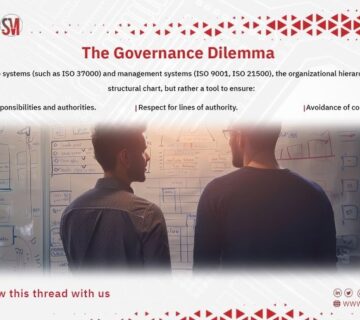Transformational Leadership: Inspiring and Empowering Teams to Achieve Success
In a rapidly changing business world, organizations need leaders who can inspire and motivate their teams to achieve higher levels of performance. Transformational leadership is a strategy that focuses on transforming individuals and teams through a shared vision and strong relationships.
What is Transformational Leadership ?
Transformational leadership is a leadership style that relies on motivating and developing individuals to achieve greater and higher goals through inspiration and personal and collective challenge. Transformational leaders change organizational culture and promote innovation and creativity.
Characteristics of Transformational Leadership :
– Shared Vision: The transformational leader provides a clear and inspiring vision of the future that everyone shares.
– Intellectual Stimulation: Encouraging innovative thinking and solving problems in new ways.
– Individual Consideration: Providing support and guidance to each team member based on their individual needs.
– Idealized Influence: The leader serves as a role model in behavior and values.
Benefits of Transformational Leadership :
– Improved Performance: By motivating employees to achieve higher goals.
– Increased Job Satisfaction: Through attention to individual needs and developing personal skills.
– Enhanced Innovation: By encouraging creative thinking and solving problems in new ways.
– Building a Positive Culture: The transformational leader contributes to creating a work environment that encourages collaboration and mutual respect.
– Develop an Inspiring Vision: Define goals and a shared vision that all team members can participate in.
– Encourage Creative Thinking: Create an environment that encourages thinking outside the box and presenting new ideas.
– Care for Individuals: Provide personal support and guidance to each team member.
– Set a Positive Example: Act with integrity and respect, and commit to organizational values.
Tools of Transformational Leadership :
– Brainstorming Sessions: Organize sessions to stimulate creative thinking and share ideas.
– Coaching and Mentoring: Provide individual guidance and support to employees.
– Regular Evaluation: Conduct periodic evaluations to track progress and achieve goals.
Practical Examples of Transformational Leadership :
– Steve Jobs at Apple: Jobs led his team to create revolutionary products like the iPhone and iPad through a clear vision and continuous motivation for innovation.
– Elon Musk at Tesla and SpaceX: Musk uses transformational leadership to motivate his team to achieve bold goals such as space exploration and developing electric vehicles.
– Richard Branson at Virgin Group: Branson encourages a culture of innovation and flexibility at Virgin, leading to the development of diverse and innovative products and services.
Challenges of Transformational Leadership :
– Resistance to Change: Some employees may struggle to adapt to new changes.
– Maintaining Motivation: The transformational leader needs to continuously put effort into maintaining high levels of motivation.
– Managing Expectations: The transformational leader must effectively manage the team’s expectations to balance ambitions and reality.
Transformational leadership is a powerful leadership style that can change the course of organizations and drive them to unprecedented successes. By adopting this strategy, leaders can inspire their teams and motivate them to achieve higher levels of performance and innovation.
To request ISO certification services for companies and institutions only (not for individuals):
Follow Us on X platform to get more blogs and threads :





No comment